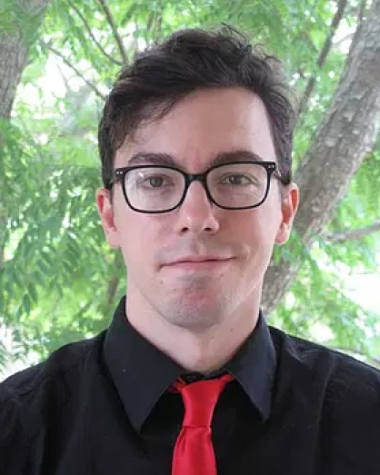Brandon P. Hedrick, PhD

Assistant Professor
Department of Biomedical Sciences
Hedrick LabCornell University College of Veterinary Medicine
T7 010B Veterinary Research Tower, Box 18
Ithaca, NY 14853
Profile
Research/Clinical Interests
I am an evolutionary biologist, comparative anatomist, and ecologist interested primarily in questions relating to ecomorphology and macroevolutionary trends. To address these questions, the Hedrick lab works on the functional morphology of a wide variety of vertebrate groups, including sensory, musculoskeletal, and reproductive systems. We commonly use micro-computed tomographic imaging, contrast-enhanced imaging (e.g., diceCT), evolutionary and biogeographical modeling, and geometric morphometrics.
Active areas of research include:
- The evolution of mammalian limb shape and locomotor mode
- Bat cranial and sensory system evolution in the context of dietary radiations
- Avian lung evolution and respiratory physiology
- Genital morphology, copulatory fit, and sexual selection
- Urbanization and its effects on morphological development
The goal of our work is to uncover the general principles of how morphological innovations lead to ecological expansion and the radiation of taxa.
Teaching and Mentoring
In this Lab, we believe:
- Science is real
- Love is love
- Black lives matter
- Feminism is for everyone
- Evolution is cool
- Immigrants are welcome
Both teaching students in the classroom and training students in the lab are critically important to me. I first started teaching as a graduate student at Penn where I cut my teeth in both developing courses and mentoring students. This was one of the most rewarding aspects of my graduate training and influenced me to strive to make teaching a major component of my career. I believe that teaching and research are reciprocal, in that better teaching leads to better research and better research leads to better teaching. Getting students interested in foundational material by bringing in recent relevant research and making the material clinically relevant leads to a more engaging and enjoyable course so that students will retain key concepts long after final exams.
Like teaching in the classroom, mentoring is one of the most important things that I do in my lab. Fostering the next generation of scientists, cultivating their research abilities, and helping them make strong scientific contributions is extremely rewarding. Teaching students how to read their first academic article, code in R, or write their own papers is one of the most fulfilling parts of my job and will keep science moving forward far into the future.
Education
- Ph.D., University of Pennsylvania, 2015
- B.S., Emory University, 2010
Professional/Academic Affiliations
- Society of Integrative and Comparative Biology
- International Society for Vertebrate Morphology
- American Society of Ichthyologists and Herpetologists
Publications
Selected Publications
- Frank, T. (undergraduate author), Dodson, P., and Hedrick, B. P. 2022. Correlating avian hindlimb function and pelvic morphology using geometric morphometrics. Journal of Morphology.
- Hedrick, B. P. 2021. Inter- and intraspecific variation in the Artibeus species complex demonstrates size and shape partitioning among species. PeerJ 9:e11777
- Hedrick, B. P., Schachner, E. R., and Dodson, P. 2021. Alligator appendicular architecture across an ontogenetic niche shift. The Anatomical Record
- Hedrick, B. P., Heberling, M., Meineke, E., Turner, K., Grassa, C., Kennedy, J., Park, D., Clarke, J., Cook, J., Blackburn, D., Edwards, S., and Davis, C. 2020. Digitization and the future of natural history collections. BioScience biz 163.
- Hedrick, B. P., Dickson, B., Dumont, E. R., Pierce, S. E. 2020. The Evolutionary Success of Rodents Is Not Linked to the Evolution of Locomotor Innovation. Scientific Reports 10:717.


